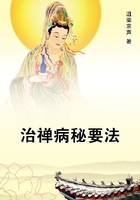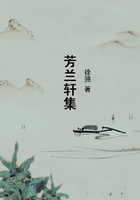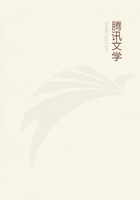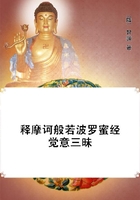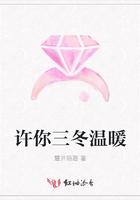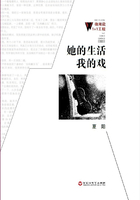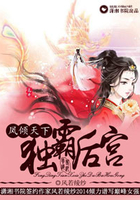There are other birds whose favourite food consists of insects found beneath the bark of trees; as for instance, the great and the small pie, which are nicknamed the woodpeckers. These two birds resemble one another in plumage and in note, only that the note of the larger bird is the louder of the two; they both frequent the trunks of trees in quest of food. There is also the greenpie, a bird about the size of a turtle-dove, green-coloured all over, that pecks at the bark of trees with extraordinary vigour, lives generally on the branch of a tree, has a loud note, and is mostly found in the Peloponnese. There is another bird called the 'grub-picker' (or tree-creeper), about as small as the penduline titmouse, with speckled plumage of an ashen colour, and with a poor note; it is a variety of the woodpecker.
There are other birds that live on fruit and herbage, such as the wild pigeon or ringdove, the common pigeon, the rock-dove, and the turtle-dove. The ring-dove and the common pigeon are visible at all seasons; the turtledove only in the summer, for in winter it lurks in some hole or other and is never seen. The rock-dove is chiefly visible in the autumn, and is caught at that season; it is larger than the common pigeon but smaller than the wild one; it is generally caught while drinking. These pigeons bring their young ones with them when they visit this country. All our other birds come to us in the early summer and build their nests here, and the greater part of them rear their young on animal food, with the sole exception of the pigeon and its varieties.
The whole genus of birds may be pretty well divided into such as procure their food on dry land, such as frequent rivers and lakes, and such as live on or by the sea.
Of water-birds such as are web-footed live actually on the water, while such as are split-footed live by the edge of it-and, by the way, water-birds that are not carnivorous live on water-plants, (but most of them live on fish), like the heron and the spoonbill that frequent the banks of lakes and rivers; and the spoonbill, by the way, is less than the common heron, and has a long flat bill. There are furthermore the stork and the seamew; and the seamew, by the way, is ashen-coloured. There is also the schoenilus, the cinclus, and the white-rump. Of these smaller birds the last mentioned is the largest, being about the size of the common thrush; all three may be described as 'wag-tails'. Then there is the scalidris, with plumage ashen-grey, but speckled. Moreover, the family of the halcyons or kingfishers live by the waterside. Of kingfishers there are two varieties; one that sits on reeds and sings; the other, the larger of the two, is without a note. Both these varieties are blue on the back. There is also the trochilus (or sandpiper). The halcyon also, including a variety termed the cerylus, is found near the seaside. The crow also feeds on such animal life as is cast up on the beach, for the bird is omnivorous. There are also the white gull, the cepphus, the aethyia, and the charadrius.
Of web-footed birds, the larger species live on the banks of rivers and lakes; as the swan, the duck, the coot, the grebe, and the teal-a bird resembling the duck but less in size-and the water-raven or cormorant. This bird is the size of a stork, only that its legs are shorter; it is web-footed and is a good swimmer; its plumage is black. It roosts on trees, and is the only one of all such birds as these that is found to build its nest in a tree. Further there is the large goose, the little gregarious goose, the vulpanser, the horned grebe, and the penelops. The sea-eagle lives in the neighbourhood of the sea and seeks its quarry in lagoons.
A great number of birds are omnivorous. Birds of prey feed on any animal or bird, other than a bird of prey, that they may catch.
These birds never touch one of their own genus, whereas fishes often devour members actually of their own species.
Birds, as a rule, are very spare drinkers. In fact birds of prey never drink at all, excepting a very few, and these drink very rarely;and this last observation is peculiarly applicable to the kestrel. The kite has been seen to drink, but he certainly drinks very seldom.
4Animals that are coated with tessellates-such as the lizard and the other quadrupeds, and the serpents-are omnivorous: at all events they are carnivorous and graminivorous; and serpents, by the way, are of all animals the greatest gluttons.
Tessellated animals are spare drinkers, as are also all such animals as have a spongy lung, and such a lung, scantily supplied with blood, is found in all oviparous animals. Serpents, by the by, have an insatiate appetite for wine; consequently, at times men hunt for snakes by pouring wine into saucers and putting them into the interstices of walls, and the creatures are caught when inebriated.
Serpents are carnivorous, and whenever they catch an animal they extract all its juices and eject the creature whole. And, by the way, this is done by all other creatures of similar habits, as for instance the spider; only that the spider sucks out the juices of its prey outside, and the serpent does so in its belly. The serpent takes any food presented to him, eats birds and animals, and swallows eggs entire. But after taking his prey he stretches himself until he stands straight out to the very tip, and then he contracts and squeezes himself into little compass, so that the swallowed mass may pass down his outstretched body; and this action on his part is due to the tenuity and length of his gullet. Spiders and snakes can both go without food for a long time; and this remark may be verified by observation of specimens kept alive in the shops of the apothecaries.


